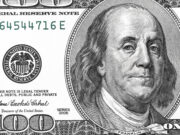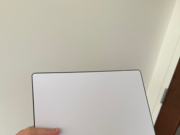In a market hungry for yield, dividend stocks can provide welcome income. But beware—not all dividend payers are created equal. Some high-yielding stocks mask serious underlying problems that could lead to painful dividend cuts.
Let’s examine three popular dividend stocks with red flags suggesting their generous payouts might be in jeopardy, plus one beaten-down dividend champion worth adding to your portfolio today.
Pfizer (PFE) – AVOID
Pfizer’s eye-catching 7.6% dividend yield might look tempting at first glance. After all, this pharmaceutical giant has paid 346 consecutive quarterly dividends and increased its payout for 16 straight years. But beneath these impressive statistics lies a troubling reality.
The company’s stock has plummeted 63% from its pandemic highs as its COVID-19 product revenue has collapsed. Paxlovid sales fell a staggering 76% in Q1 2025, dropping from $2 billion to just $491 million. This steep decline has pushed Pfizer’s payout ratio to an unsustainable 121.5%—meaning the company is paying out more in dividends than it earns.
While management has made progress reducing debt (down 31% in less than a year), Pfizer still carries $44 billion in net debt while facing declining revenue. The company reported an 8% revenue decline in Q1 2025, delivering only $13.7 billion compared to $14.9 billion in the same quarter last year.
It’s worth noting that Pfizer has cut its dividend before, slashing the payout in 2009 to help fund its $68 billion acquisition of Wyeth. With continuing revenue challenges and heavy R&D expenses (averaging over $10 billion annually in recent years), history could repeat itself despite management’s commitment to the dividend.
AbbVie (ABBV) – AVOID
AbbVie has built an impressive reputation as a dividend grower, having raised its payout for 11 consecutive years. Its current 3.5% yield appears solid on the surface. But a closer look reveals alarming warning signs.
The company’s payout ratio has ballooned to 266%—an extraordinary level that signals serious dividend sustainability concerns. Generally, payout ratios consistently above 75% indicate potential dividend trouble, and AbbVie has blown past this threshold.
The core problem is the rapid decline of Humira, once the world’s best-selling drug. Sales have plummeted 51% to $1.1 billion in Q1 2025 compared to Q1 2024 as cheaper biosimilar competitors have entered the market. This revenue cliff has hammered AbbVie’s bottom line, with net income having fallen approximately 69% from its pandemic-era highs to just $4.2 billion over the trailing twelve months.
Adding to these concerns, AbbVie’s net debt has climbed 24% over the past two years to $64.7 billion. While its next-generation immunology drugs Skyrizi and Rinvoq are showing impressive growth (up 65% year-over-year to $5.1 billion in Q1), it remains uncertain whether this growth can fully offset Humira’s decline quickly enough to save the dividend.
Medtronic (MDT) – AVOID
Medtronic boasts one of the most impressive dividend histories in healthcare, having increased its payout for 47 consecutive years—just three years shy of achieving coveted Dividend King status. This medical device giant currently yields 3.3%, but investors should approach with caution.
The company’s payout ratio has risen to a concerning 84.7%, leaving little room for error as it faces multiple headwinds. Net income declined 2% year-over-year to $1.29 billion in fiscal Q3 2024, continuing a troubling pattern of stagnant profitability despite record revenues.
A deeper look at Medtronic’s financials reveals that net income hasn’t grown significantly in a decade despite record revenues. The company’s acquisitive strategy—completing over 60 acquisitions in recent years—has failed to translate into stronger bottom-line growth. Meanwhile, Medtronic carries $18.6 billion in net debt, with annual servicing costs of $757 million.
Management has taken some positive steps, reducing debt by 8% from recent highs and repurchasing 3.7% of outstanding shares since 2024. However, these moves may not be enough to maintain its nearly half-century dividend growth streak, especially as the company faces increased competition, persistent supply chain struggles, and patient lawsuits related to its spinal cord stimulation technologies.
United Parcel Service (UPS) – BUY
While the three stocks above face serious dividend sustainability questions, UPS presents a compelling opportunity after its shares have plunged more than 50% from their 2022 highs. Now yielding an impressive 6.6%, this package delivery giant offers a rare combination of high current income and potential price appreciation.
UPS has faced several challenges that explain its stock price decline. After benefiting enormously from pandemic-driven delivery demand (shares rocketed nearly 150% between March 2020 and January 2022), the company has dealt with the normalization of delivery volumes, a challenging Teamsters Union negotiation, and most recently, an announcement that it plans to reduce Amazon shipment volume by more than 50% by 2026.
Despite these headwinds, there are clear signs of improvement. Earnings rose 4.2% year-over-year in Q1 2025 as the front-loaded costs from the union contract are now in the rearview mirror. Both U.S. and international revenues are climbing again, even as the company deliberately reduces its lower-margin Amazon business.
Management’s strategy to focus on more profitable segments—healthcare, international, business-to-business, and small-to-medium-sized businesses—shows promise. The company is also aggressively cutting costs, with network restructuring expected to reduce expenses by approximately $3.5 billion this year.
At just 14.6 times forward earnings, UPS trades at a historically low valuation. While there’s some risk to the dividend given the company’s transition, management’s focus on improving profitability and the fundamentally resilient nature of package delivery demand make this beaten-down stock a compelling buy for income-focused investors willing to look beyond short-term volatility.
Bottom Line
Dividend investors must look beyond headline yield figures to assess the sustainability of payouts. The astronomically high payout ratios at Pfizer, AbbVie, and Medtronic signal serious warning signs that their dividends could be at risk of reduction—a scenario that typically leads to significant share price declines when it occurs.
In contrast, UPS offers a compelling opportunity after its dramatic selloff. While not without risks, its combination of a fortress-like competitive position, focus on profitability improvement, generous current yield, and attractive valuation make it a standout choice for dividend investors seeking both income today and potential capital appreciation tomorrow.
Remember the old Wall Street adage: the safest dividend is the one that’s just been raised, not necessarily the highest one available. Focus on dividend sustainability rather than chasing the highest yields, and your income portfolio will likely deliver more reliable results over time.











